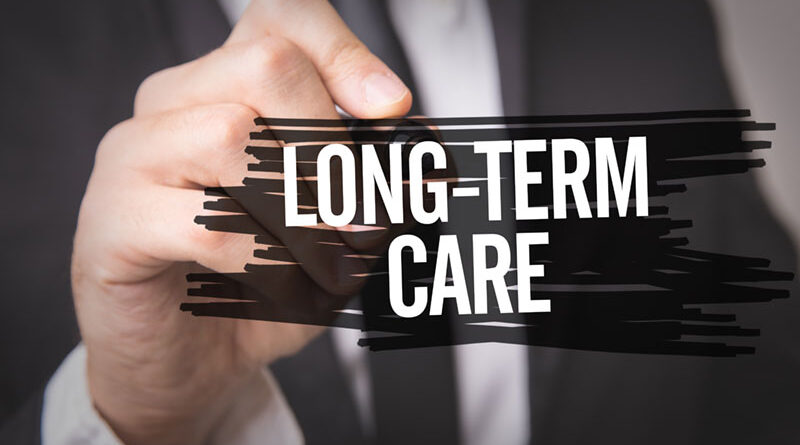Long-Term Care Planning: Essential to Retirement Plan
By Deborah Jeanne Sergeant
You have likely worked with a financial adviser for saving and investing money for retirement; however, if you have not considered your long-term care options, your plan still misses a very important piece.
A debilitating accident, stroke or other reason for long-term care can wipe out the assets of someone who has worked hard throughout life in a matter of months.
The cost of skilled nursing in an institutional setting in Syracuse is an average $416 per day for a private room or $399 for a shared room, according to 2019 figures from the American Council on Aging. The average stay length is 835 days, according to the National Care Planning Council, amounting to nearly $350,000.
What will the cost be by the time you need it? About half of adults living now will need long-term care.
“When you look at those kinds of numbers, one can rapidly deplete savings paying for care,” said Randy L. Zeigler, certified financial planner and private wealth adviser at Ameriprise Financial Services, Inc. in Oswego.
Zeigler said that some people purchase long-term care insurance policies so their families have greater financial flexibility in providing care for their family members. Although residents on Medicaid receive the same treatment as those paying out-of-pocket, facilities can choose to whom to provide the next open bed, since private pay patients pay a greater amount of money for their care than does Medicaid.
“Just because you qualify for Medicaid doesn’t mean that any nursing home is going to accept you,” Zeigler said. “You apply for a bed.”
Where the bed is located is not a priority for the Medicaid system. The Medicaid-eligible individual may need to live in a nursing home a substantial distance away from where their friends and family live.
The cost of long-term care insurance may be prohibitive to people signing up later in life. In the past 10 years, rates have increased dramatically; however, those grandfathered into earlier plans generally pay lower premium costs than those charged for new policies.
As one grows older, the rates increase. Zeigler said that people should have long-term care coverage in place by the time they are in their late 40s or early 50s.
“It has the potential to create a level of financial flexibility that might enable them to avoid applying for Medicaid,” he said. “It is an estate planning tool. I have a difficult time discussing this subject with people in their 50s and 60s who are in good health and can’t perceive they’ll ever be frail and needy in their later years.”
He gives a written warning to those who are able to afford to purchase quality long-term care insurance coverage, but refuse to buy coverage, so their children do not come back later claiming he did not give their parent sound advice. That is the weight Zeigler puts on long-term care insurance within estate planning.
Many companies no longer sell long-term care insurance because the costs of care rose faster than anticipated and average length of claim has been longer than originally expected, although companies honor the policies they have already sold.
Many people believe that Medicare will pay for long-term care. This is not true.
Medicare typically covers the first 20 days for live-in rehabilitation. From day 21 to 100, it covers 80% of the cost.
The income eligibility threshold to receive Medicaid benefits for long-term care is $875 for singles, $1,284 for married couples (both applying) and $875 for only one spouse applying. The asset threshold is $15,750 for singles or one spouse applying and $128,640 for the non-applicant spouse.
Trying to qualify for Medicaid long-term care expense reimbursement requires that the applicant own a relatively small amount of financial resources. Simply giving away the excess money does not work unless it is five years prior to the need for Medicaid, with only a few exceptions.
“You can use irrevocable trusts and gifting strategies to reduce resources, but you’re releasing control of assets and money,” Zeigler said.
“Systematic gifting strategy put in place years in advance can be a good idea, but seriously consider the trust issues and financial stability of the recipients. If you want them to hold those gifts in case you need them in the future, you’d have to know they’re financially stable.”
There is also the chance that a trustworthy person could lose the money because of divorce or a lawsuit.
Mary Tone Rodgers, chartered financial analyst and professor of finance at SUNY Oswego School of Business, said that people with enough financial resources can purchase less long-term care coverage and cover some of the expenses out-of-pocket.
“People often think they can’t afford long-term care insurance because they’re shopping for complete coverage, Rodgers said. “Reframe your shopping to be looking for a partner in sharing the risk of long-term care costs, not for an insurance company to cover the entire load of covering expenses.”
Part of this strategy could include delaying institutional care by aging in place and, once needed, relying on family to help with activities of daily living. That could help a nest egg and last longer, which is important considering many policies offer a maximum of three years’ coverage.
Rodgers cautioned about having too little insurance.
“Make sure you consult your insurance professional because the consequences of under-insuring can be grave,” she said.
While it is still early to see the consequences of COVID-19 on nursing home use, Rodgers said, it may cause more people to receive care at home and forgo institutional care.

